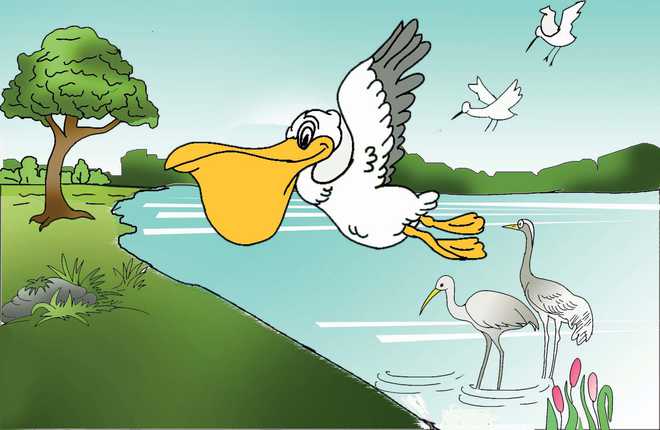
Illustration: Vishu Verma
Harvinder Khetal
“Later, Ella looked for the two swallows in the eaves outside the window, watching them even more closely now. The thought of them flying all that way, across mountains and seas and returning here, because this was their home — of them knowing how to find it — changed things. It was a new way of seeing; this was no longer just the place where women and men were kept, but the home of other creatures too, ones that had travelled far and still chosen it because this, above all other places, was the place to bring their families into the world.”
THIS passage from Anna Hope’s novel ‘The Ballroom’, a haunting tale of romance set in a time when the war is on the horizon, leads me to a fork of thoughts: migratory birds, of course, the vanishing swallows, the migration crisis of Syrians and Rohingya Muslims …and home, or rather, a home away from, refuge. In this case, the home away from is evocatively the eave outside the window. One doesn’t really need a huge mansion to feel at home. Just a little space in the right environment. At the same time, a palatial house may not give the homely feeling if the environment is hostile.
One of my earliest memories of educative field trips as a child is a walk to the end of Sukhna Lake in Chandigarh to watch birds at the break of sawn. To my great wonder, we were told by the teacher accompanying us that birds had come there from Siberia. The only part clear was that the winged creatures were escaping the cold climes and taking shelter in the relatively warmer Chandigarh. They make transcontinental marathon flights from China, Afghanistan and the Himalayan region to escape the biting cold climate. We look through the magnifying glass and try to identify the Brahmi ducks, pochards, geese, coots, stilts, cranes, storks and sandpipers, and maintaining silence so as not to disturb the winged guests who have made it their transient homes.
The place that a bird selects to migrate is called the refugium (plural refugia). The dictionary defines refugium as an area of relatively unaltered climate that is inhabited by plants and animals during a period of continental climatic change (such as a glaciation) and remains as a center of relict forms from which a new dispersion and speciation may take place after climatic readjustment.
Till today, if I forget the way to a place I have visited before, I feel that man may be the most intelligent of god’s creations, but when it comes to navigation, without the compass needle or Google Maps, we can be quite at a loss in the vast expanses of land, forest or sea.
Stories of migration of birds are fascinating. It is said that about 40 per cent of all birds in the world migrate. The Himalayas have the highest mountain peak in the world, Mt Everest. So, it’s quite right that the highest flying migratory bird is found in its climes. The bar-headed geese regularly reach altitudes of up to five and a half miles above sea level while flying over the Himalayas in India.
Another awesome fact: We known how arduous long train, bus or plane journeys can be. Just imagine what the birds must be going through to reach their winter habitats. The Arctic tern makes the longest journey during its annual migration from the North Pole to the South Pole. The bird travels from Greenland to Antarctica and back to its breeding grounds in Greenland, covering a distance equalling more than three times the earth's circumference (81,600 km). These black-capped, red-billed birds take the route along West Africa's coast, crosses the Atlantic ocean and flies over South America to its final destination. And over its lifespan of more than 30 years, the flights can add up to the equivalent of three trips to the moon and back!
If there was an award for fastest bird, it would go to the great snipe: Flying around 4,200 miles at speeds of up to 60mph, it surpasses any other animal for speeds and such long distances.
So, how do they manage? The birds enter a state of hyperphagia, where they bulk up on food in the weeks preceding migration to store fat. They later use it for energy on their long and taxing journeys. It is seen that the blackpoll warbler body weight doubles before it flight of 2,300 miles begins non-stop for 86 hours.
What if we all had wings? There would be no boundaries! Awesome, that would be. Each one happy with its eave!



























